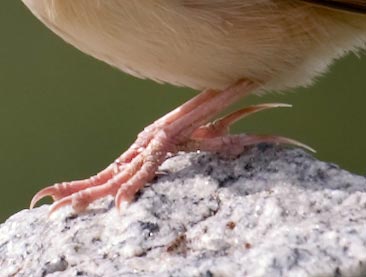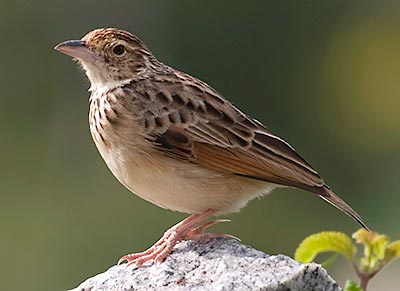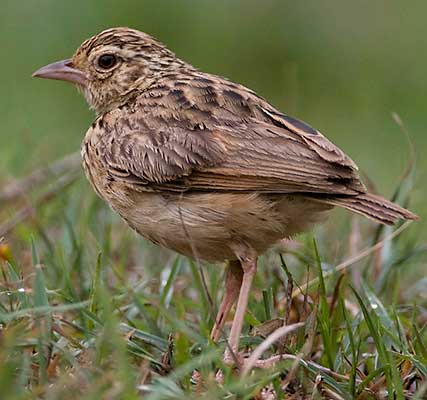You are here: Info » bird-info » indian-bushlark
Indian Bushlark. Closely similar to the partly sympatric Jerdon’s Bushlark.
With experience, it is generally most easily distinguished by shape: its tail is noticeably longer than in Jerdon’s, and it can generally be appreciated that its bill and legs are slightly shorter than in Jerdon’s.
Also the coloration and pattern of the upperside usually differs clearly from in Jerdon’s: the streaks on the mantle and scapulars are slightly finer than in Jerdon’s, and in the area of sympatry the upperside generally looks more rufous-tinged than in Jerdon’s.
There are also additional, though less obvious, differences. The underside is whiter than in Jerdon’s (little difference in worn plumage, though).
The supercilium is broader and more prominent, and is usually whiter in front of the eye than in Jerdon’s Bushlark (buffish in front of eye and more whitish above/behind in Jerdon’s, sometimes also in Indian).
Moreover, the whitish band along the rear edge of the ear-coverts/side of nape is usually more prominent than in Jerdon’s Bushlark.
The tertials and central tail-feathers, and usually also the median and greater coverts, have paler centres than in Jerdon’s Bushlark, especially when fresh.
The primary coverts have broad buffish-rufous fringes, which usually completely conceal the dark centres, while in Jerdon’s Bushlark the dark centres are usually prominent.
In flight the remiges appear considerably more rufous than in Jerdon’s Bushlark, and in the hand it can be judged that the primaries are entirely rufous with dark tips, whereas in Jerdon’s the primaries show a dark stripe also along the feather shafts to the bases.
Especially in the song-flight it can often be seen that the outer tail-feathers are blackish, contrasting with distinctly paler central tail-feathers, wheras in Jerdon’s Bushlark all of the tail-feathers are approximately the same colour.
The song consists of a series of high-pitched whistles which gradually become more drawn-out. It is clearly different from the rattling song of Jerdon’s Bushlark. The song-flight is indistinguishable from that of Jerdon’s. Its calls include quick series of high-pitched whistles and a drawn-out trill, which are all confusable with calls of Jerdon’s Bushlark.
Here’s the image of the Toe. Notice how small it is compared to the Jerdons:






